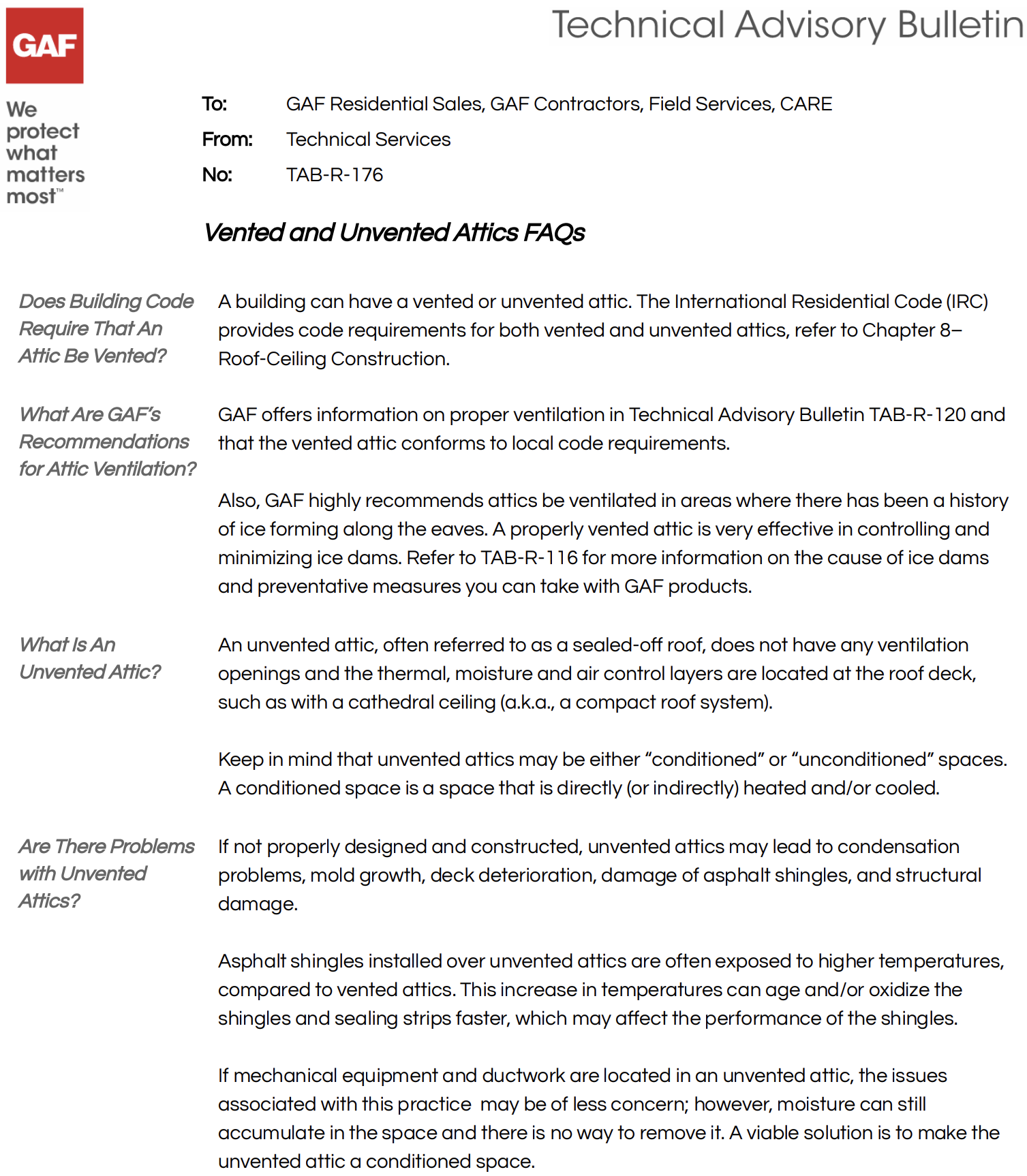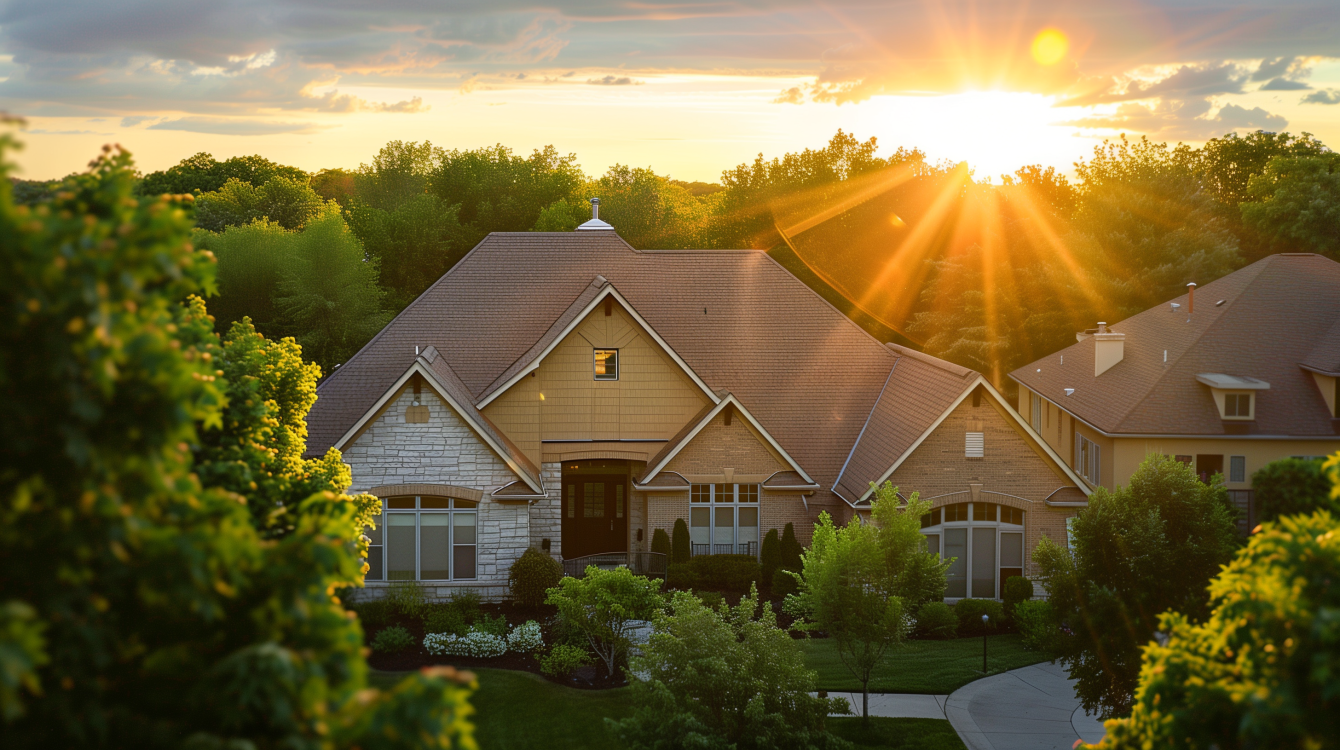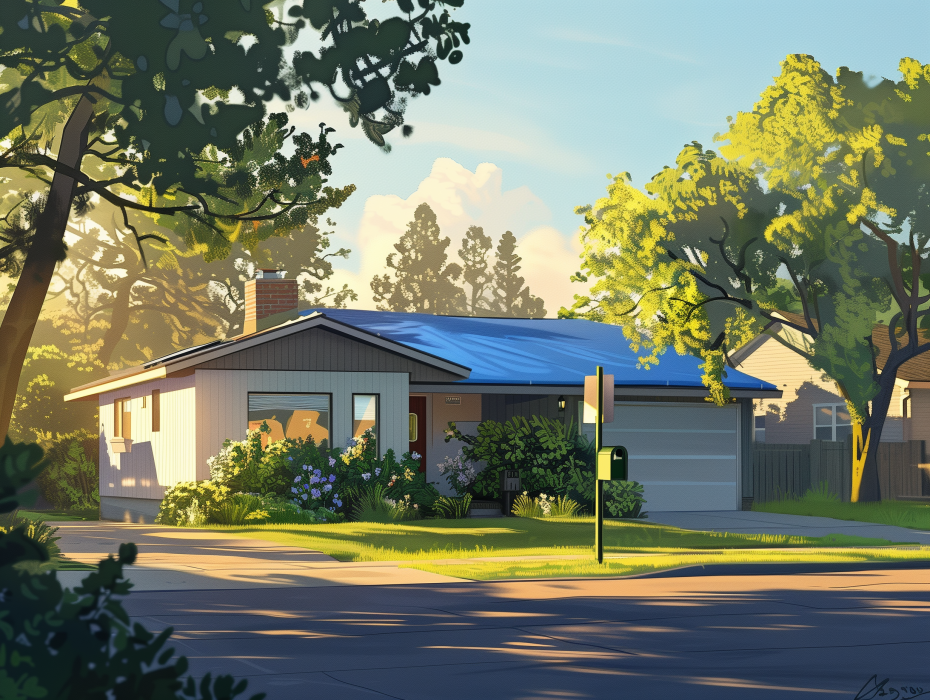Does Building Code Require That an Attic Be Vented?
Building codes, such as the International Residential Code (IRC), provide requirements for both vented and unvented attics. Refer to Chapter 8 – Roof-Ceiling Construction in the IRC for detailed code requirements.
GAF’s Recommendations for Attic Ventilation
GAF strongly recommends that attics be ventilated, especially in areas with a history of ice forming along the eaves. Proper attic ventilation is effective in controlling and minimizing ice dams. For more information on ice dams and preventative measures, refer to GAF’s Technical Advisory Bulletin TAB-R-116.
What Is an Unvented Attic?
An unvented attic, often referred to as a sealed-off roof, lacks ventilation openings. The thermal, moisture, and air control layers are located at the roof deck, such as with a cathedral ceiling (a.k.a., a compact roof system). Unvented attics can be either “conditioned” or “unconditioned” spaces. A conditioned space is directly or indirectly heated and/or cooled.
Potential Problems with Unvented Attics
If not properly designed and constructed, unvented attics can lead to:
- Condensation Problems: Moisture accumulation can cause mold growth and deck deterioration.
- Shingle Damage: Asphalt shingles installed over unvented attics are often exposed to higher temperatures, which can accelerate aging and oxidation of the shingles and sealing strips.
- Structural Damage: The lack of ventilation can compromise the overall structure.
When mechanical equipment and ductwork are located in an unvented attic, some issues may be mitigated, but moisture accumulation remains a concern. A viable solution is to make the unvented attic a conditioned space.
Spray-In-Placed Foam and Unvented Attics
Applying sprayed-in-place foam directly to the underside of a roof deck may inhibit airflow like in a traditional vented attic. However, this alone does not convert the attic into an unvented space. To fully convert, all existing vents need to be removed and/or closed off. Follow rigorous building code requirements and the foam manufacturer’s recommendations when installing an unvented attic assembly.
Effect on GAF Limited Warranty
Installing shingles over an unvented deck does not void GAF’s limited warranties. However, any damage caused by installation over an unvented attic, or lack of ventilation, is excluded from coverage under the terms and conditions of GAF’s limited warranties.
Conclusion
Understanding the distinctions and requirements of vented and unvented attics is crucial for maintaining the performance and longevity of your roofing system. Whether constructing a new roof or retrofitting an existing one, following GAF’s recommendations and local building codes will help ensure your attic remains a functional and effective component of your home.
For Immediate Service or Consultation
Contact Allied Emergency Services, INC.
Phone: 1-800-792-0212
Email: Info@AlliedEmergencyServices.com
Location: Serving Illinois, Wisconsin, and Indiana with a focus on the greater Chicago area.
If you require immediate assistance or have specific questions, our human support is readily available to help you.
Disclaimer: This article is intended for informational purposes only. For professional advice, consult experts in the field.










